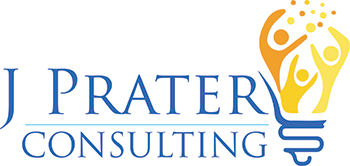I’m not shy in saying that my favorite business activity is facilitation. (There’s probably some unwritten rules in business that you’re not supposed to have a favorite service… but you know… I’m just being honest).
Give me a flip chart, some sharpies, a room full of people and a difficult topic to navigate and I AM SOLD.
I learned a long time ago that facilitation is an art that requires constant refinement and practice. AND with the rise of hybrid work models, its critically important that when you get everyone in a room to discuss something, you use the time wisely and have a clearly articulated outcome.
Getting ready to gather a group to have a high stakes discussion? Here are my top tips for ensuring your next facilitated session is a success.
- Understand when facilitation is most effective — when you have to build consensus or buy-in. Facilitation is typically only appropriate when there is no “right” answer, rather there is a “best” answer. It would not be appropriate to use facilitation in a compliance or safety training, when there is concrete information that the attendee needs to learn. The aim of facilitation is synthesis and engagement.
- Be realistic about what you can accomplish in the time allotted. A wise facilitator once told me that “I was constantly trying to fit 10 lbs of content in a 5 lbs sack”. They weren’t overestimating – at that time I was always fearful that I would run out of content. Here’s a revolutionary thought — under shoot your time because things always come up (and if they don’t, end the meeting early). You will take more time than you realize to cover even the simplest topics. I need to take this advice as well.. I still struggle to gauge the appropriate amount of content in a session.
- Set up an environment where vulnerability and honesty are supported. It is RISKY to give honest feedback and opinions. Group rules should be established to ensure that there are explicit instructions that all perspectives will be respected. In addition, everyone should be thanked for their contribution, even if the consensus sways away from the information given. Remember, it’s not about being “right”, rather finding the “best” course of action.
- You should be willing to challenge and dig into answers as you are facilitating. Your goal is to capture, synthesize, and build consensus on information. This means you need to be challenging answers, asking questions, and seeking to understand. This may mean that you might wade into conflict – go there. Remember, you’ve established this is a space that you can have open, honest conversations.
- Write a focus question or statement on a flip chart if you fear that your conversation might wander. This is powerful and a visual representation of the focus of your conversation. I have found that this simple visual cue not only keeps the conversation on track, but gives you a map to drive you back. And pro tip – if the conversation wanders too much, you can go back and re-adjust as a group, what you are looking to accomplish.
Want to learn how facilitation can take your next meeting from good to great? Have a high stakes discussion that you need to bring in an outside facilitator? Schedule a call today to learn how we partner with organizations just like yours to help build fantastic teams.





